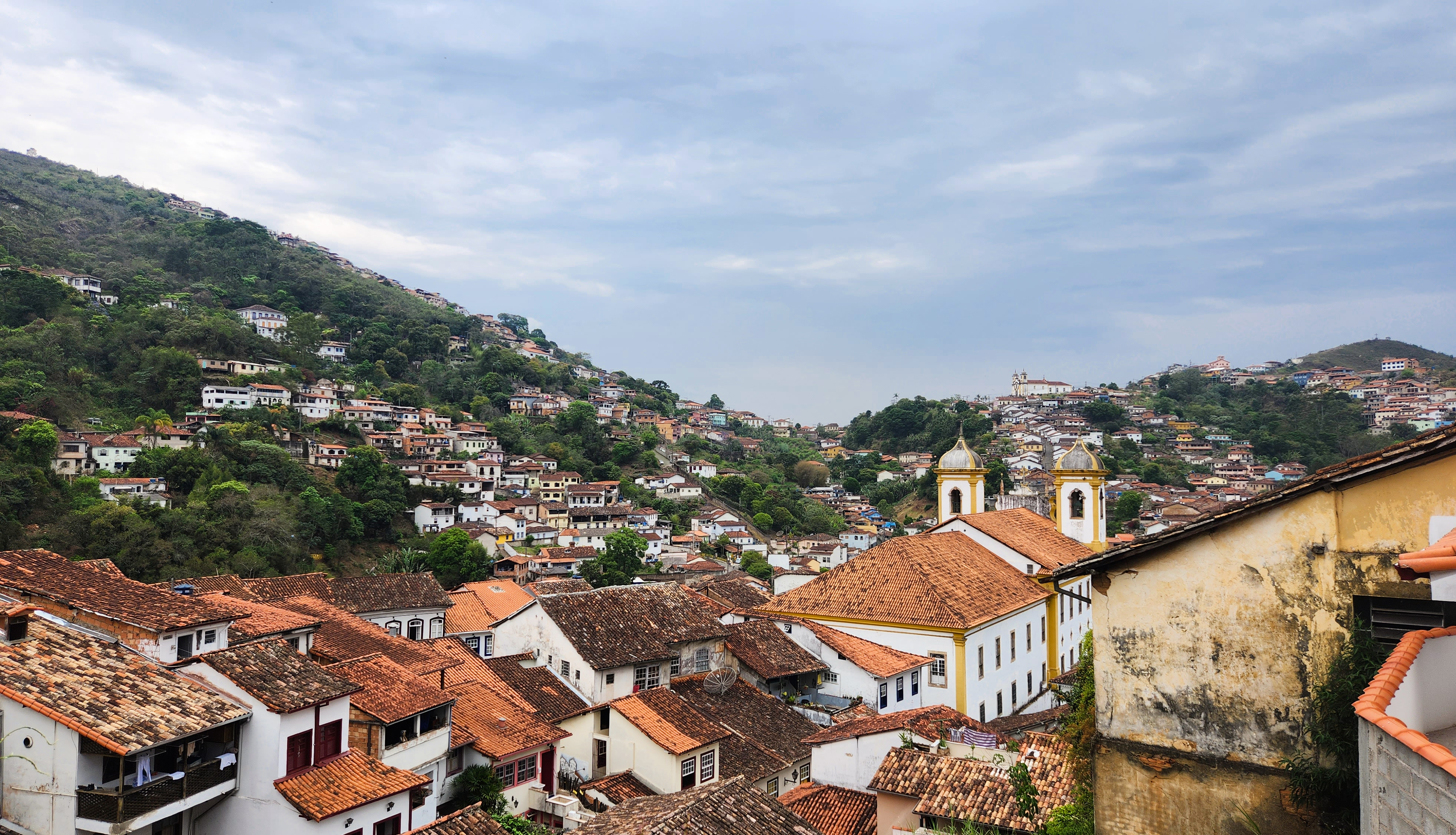The Town of Black Gold
Contributor
Reciprocal Landscapes
Nestled amidst the undulating landscape of Brazil, Ouro Preto, translated “Black Gold,” owes its name to the discovery of gold concealed beneath layers of iron oxide. With its winding cobblestone streets and Baroque architecture, this quaint town conceals a story of wealth, exploitation, and transformation reverberating through the annals of time.
In the 18th century, Ouro Preto emerged as a beacon of opulence. Tremendous amounts of gold were excavated from its mountains, and its glittering allure drew thousands of fortune-seekers. Artists and architects also flocked to this remote town of the New World and built dazzling churches that are comparable to those in Rome. At its zenith, Ouro Preto was the largest settlement in South America, with a population of more than 80,000.
Ouro Preto’s very existence is inextricably tied to the mines. Not only was the flourishing population a direct result of demand for mine labor, but the rocks and clays removed as by-products of mining were used to construct the town itself. The red, yellow and blue tones found in the clay can be seen on houses in the area. There is a unique symbiosis between the human settlement and the landscape: as the mines delved deeper beneath the town, the town, in turn, sprawled further across the hills.
Curiously, though Ouro Preto was the epicenter of the Gold Rush, the town itself holds surprisingly little of this precious metal. The only locations harboring the warm glow of gold are the interiors of churches. Under Portugal’s rule, more than 800 tons of gold extracted from Ouro Preto were shipped back to Europe, with church decorations as the only exception. While the gold may have departed from Ouro Preto long ago, the legacy of its extraction still lingers in the collective memory of the town’s inhabitants. Today, Ouro Preto stands as a living museum, where the echoes of the past can still be heard in the creaking floorboards of its colonial-era houses.
The story of Ouro Preto serves as a stark reminder of the global interconnectedness of history. The town’s wealth, extracted at the expense of indigenous lives and the sweat and tears of African slaves, played a pivotal role in fueling the first industrial revolution in Europe. Within the depths of Ouro Preto’s mines, indigenous people and slaves from Africa were thrust into backbreaking labor and treacherous environments. Slaves were forced to shave their heads and work naked to avoid any possible means of hiding gold. Child labor was exploited to get into narrow tunnels. The average life expectancy of a mine worker was merely 30. As the riches flowed from the New World to the Old, they became the crown jewels that adorned the Portuguese king’s scepter, empowering the expansion of their empires and the consolidation of their power.
Ouro Preto is more than just a historical curiosity; it is a living testament to the complex interplay of wealth, exploitation, and the enduring human spirit. It reminds us that the glittering allure of precious metals often conceals a darker, more complex story beneath the surface.
